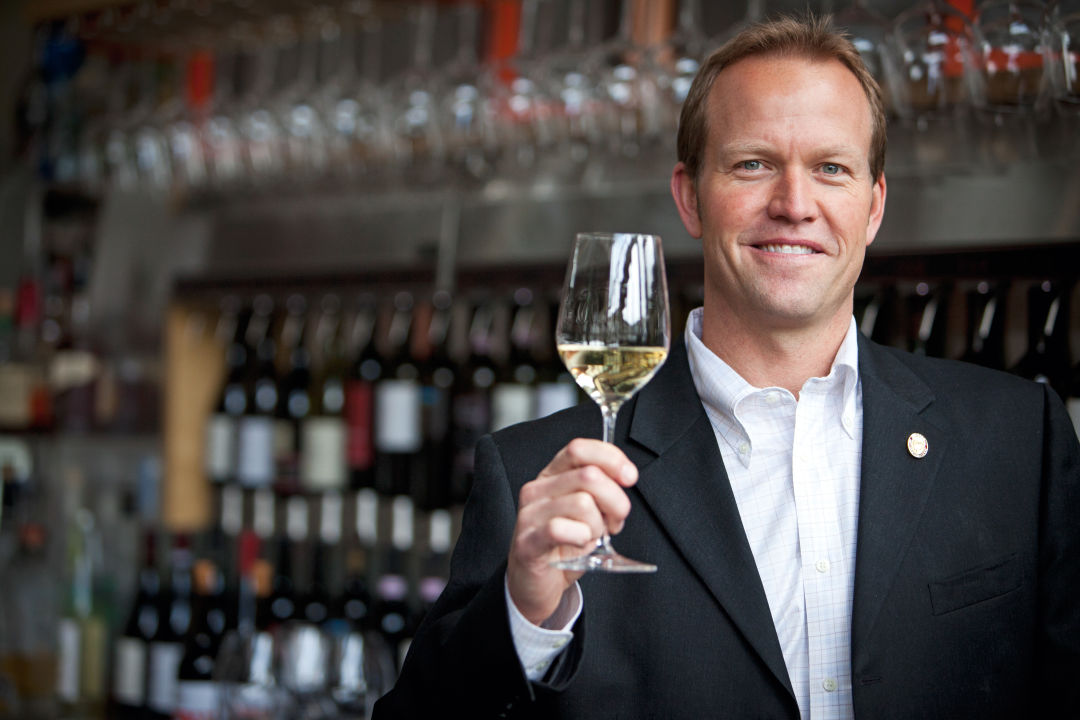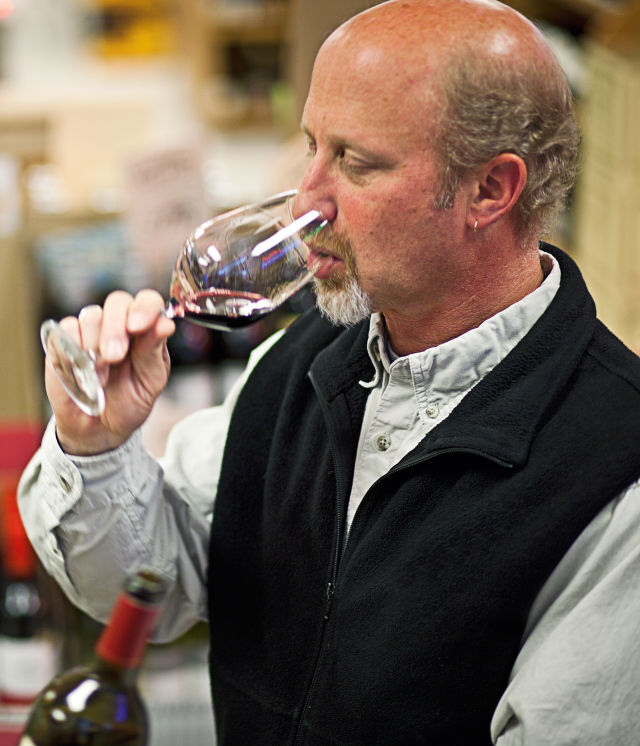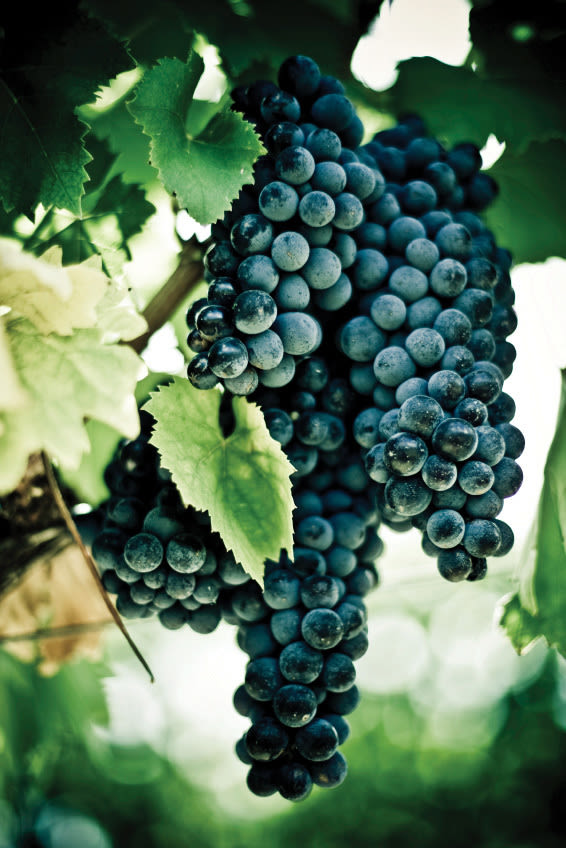Toast of the Town: Vail's Wine Scene Comes of Age

The Bar at Vin48
Image: Preston Utley
It’s a quiet day in Vail, but sommelier Jamie Garrett breezes through the Sonnenalp with purpose. The chatter of guests punctuates the tranquil mood with a welcome exuberance as Garrett sets about the business of the day, his head brimming with details about the thousand-plus wines—the most extensive list in the valley—that he helped select for the hotel’s eateries.
A woman at the lodge’s Swiss Chalet restaurant tells Garrett she lived in Switzerland for a year, so he summons a bottle from the city of Sion in the country’s Valais region, “Les Murettes” by Robert Gilliard. She immediately recalls visiting the town and recognizes its signature monastery on the label. Before she first sips the crisp white wine with an effervescent bite—typical of wines grown in colder regions, he shares—the expert sommelier has made a connection.
“Finding Swiss wines in the States is not that easy,” he says. Nonetheless, the woman and her friends nestle in for the bottle of Swiss Fendant and a meal of raclette, painting a cozy Vail scene lifted straight from the Alps.
It’s always been possible to find fine wine in Vail. A discriminating population with international ties has assured that. But it takes more than availability to call a town a “wine town.” A place has to be as interested in wine—how it’s made as well as how it tastes—as other pastimes. It needs a solid population of oenophiles. Conversations about wine must permeate the populace, and locals must produce some of their own.
The Vail Valley has always had pockets of wine connoisseurs, but in the past few years, restaurants, purveyors, and even a few local vintners have infused a new knowledge and inventory into the valley.
Master Sommelier Sean Razee has seen the transformation firsthand. Razee is one of only 170 Master Sommeliers worldwide—a mere ten in Colorado. He helped craft the wine list for Spago at the Bachelor Gulch Ritz-Carlton and now works with a wine distributor. He’s observed as the program for the Court of Master Sommeliers—which certified him at its highest level in 2008—has grown in the Vail Valley, with a half dozen local sommeliers now among its advanced ranks. And more and more restaurants have staff positions dedicated to buying wine, working with chefs to create meals and wines that pair well, and educating people about wine. Restaurateurs embrace wine as “one more component of the meal,” he says.
“In my first days in the valley, you had a few people who really knew about wine, who came from other areas where they acquired a lot of knowledge,” Razee says. Now, “people are acquiring knowledge in Vail. There’s a community of education and mentorship taking place.”

Master Sommelier Sean Razee basks in the evolution of Vail's wine scene. Here, he relishes a vintage at Vin48.
Image: Charles Engelbert
Education is just one pillar of a wine town, according to Razee. To really have people associate a place with wine, it needs collectors, boutiques that specialize in wine sales over liquor and beer, and chefs who emphasize wine as much as food.
Vail passes on all fronts. The valley has seen continued growth in fine wine sales, while sellers like Pollyanna Forster’s drink! in Edwards focus on wine, in her case complemented by cheese and butcher meats at neighboring eat! and cut!. Vin48 in Avon accommodates tastings with half pours and expensive wines by the glass, while chefs like Wolfgang Puck, who brought Spago to Beaver Creek, elevate wine along with their food.
“Those chefs lend credibility to the idea that Vail is a wine market,” Razee says. And there’s another pillar of the valley's oenophile foundation: winemakers.
In 2008, Kevin Furtado, who has been living in Vail since 2005, partnered with fellow Vail local Nelson Kunkel to produce K. Furtado wines. In 1997, Furtado earned his title as sommelier before setting out to produce his own wine. Because the climate in the Vail Valley, with unpredictable freezes well into the spring growing season, makes growing grapes impractical, Furtado set up shop in Santa Barbara County, California, in 2004 and produced his first commercial vintage in 2007. He still works as a sommelier at Larkspur restaurant in Vail, where he also hosts a popular “wine university.” But the town’s seasonal nature allows him to oversee his California winery operations in the offseason.
His wines are now available at a number of Vail Valley restaurants, including Spago, Sweet Basil, Larkspur, Vin48, and Restaurant Avondale—not an easy feat for a young winery in a town with sophisticated tastes.
“I think the town’s really very competitive,” Furtado says. “Because it’s such a high-profile town, it’s hard for brands to break into.”
But as a local and a sommelier at one of Vail’s premier restaurants, Furtado had an existing entree.
“Anybody who comes from Vail, it seems the town really embraces them,” he says. The restaurateurs like a strong local connection to wine just as they do with food, and the patrons like it, too. It’s a source of pride, and people feel good about the close connections to what they’re consuming.
Of course, “the quality has to be there first,” he says. But support for all things local opens doors that otherwise might stay locked.
in addition to furtado's vineyards, the Vail Valley has a number of other winery connections with full- or part-time residents who share ownership in major labels. Ray and Sally Duncan, founders of Silver Oak and Twomey Cellars in California, co-own Claggett-Rey Gallery in Vail Village with local Bill Rey. Tom and Eleanor May, part owners of Schramsberg Vineyards in Napa Valley, are part-time residents in the valley. Likewise with Marilynn and Carl Thoma, proprietors of Van Duzer Vineyards, which grows prized pinot noir grapes in Oregon.
Marilynn Thoma echoes Vail’s homegrown wine experts on why Vail and wines go hand-in-hand, giving insight on why so many national winemakers make the valley a second home: “Food and wine go together, and the valley is blessed with innovative chefs and restaurants,” she says. “Whether it’s visitors or residents, they develop a sense and appreciation for fine wine. They are influenced by visitors from all over the world, and their expectations are that the finest of wines will be available for them.”
That knowledge and experience has trickled down to all levels of service and consumer culture. Drinkable wine with high-end service is available to everyone, no matter what their income.
“The professionals who give $100 service for a $10 glass of wine sets Vail apart,” says Garrett. He cites the Sonnenalp, Vin48, Larkspur, La Tour, Spago, and The Left Bank as the pinnacles of the Vail Valley’s wine scene, bolstered by a slew of restaurants with growing wine programs.

Alpine Wine and Spirits owner Mickey Werner knows the taste of wine and the valley’s tastes.
Mickey Werner, the owner of Alpine Wine and Spirits inside Vail’s City Market, sees the same maturation in the valley’s restaurant employees. “They’re seeing and listening to what diners are ordering, and they want to try it themselves.”
At Vin48 in Avon, waiter Jason Baez speaks of the forty-plus wines with a sense of possession: “I have” this label. That’s one of the best “I have” to offer. He feels a sense of ownership for the wines and introduces each as an intimate friend.
In the restaurant, a patron inquires whether the blended Lebanese red pairs well with the beef tenderloin. It does, Baez tells her, adding that it comes from the oldest winery in the world, where the winemaker has never missed a vintage because of war.
Such detail gives the wine a story to complement its flavor, coloring a memory of the occasion to be retold again and again, with the wine as centerpiece and Avon the setting. It’s how the Vail Valley and its wines remain on the lips of those who sip and sup here—and why people will continue to pair Vail with wine.

Vail Valley Vintages
For the true oenophile, the ultimate curiosity lies not in how wine tastes, but in how it’s made. That knowledge, too, is available in Vail. Patrick Chirichillo was only eight years old when his grandfather taught him how to make wine.
“Traditions fade, but I’m not letting this one go,” he says. Chirichillo was ahead of his time in the valley when, almost twenty years ago, he launched Churchill Wine Cellars, a cooperative winery in Wolcott. It doesn’t sell its wines commercially. Members buy a portion of what they make, from six cases to a whole barrel.
“We’re not selling wine by the glass,” says Chirichillo. “We’re selling the wine-making process.”
Chirichillo brings his grapes in from Stockton, California. Members help crush, squeeze, and bottle their own wines. The winery produces forty to fifty barrels per year and boasts 150–200 members, drawing people from nearby and as far as Denver and Missouri who want to make their own wine. And the effect such hands-on experience has on the average consumer?
“You probably drink more, because you made it,” Chirichillo jokes. “You’re proud of it, and you take it to other people’s houses, and you talk about it. You can put your name on it.” Nonmembers can join in some Churchill Wine Cellars events, if they call ahead. Chirichillo hosts a pig roast with harvesting in August, and grape crushing starts in September, with squeezing on tap a week later. Reach Chirichillo at 970.471.0429 or [email protected].






































